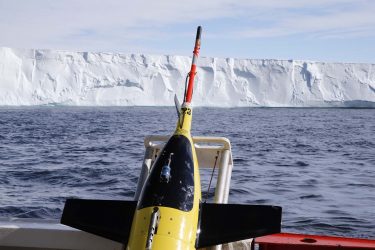
Jason Gobat/University of Washington
A team of ocean robots deployed in January 2018 have, over the past year, been the first self-guided ocean robots to successfully travel under an ice sheet and return to report long-term observations.
Beyond mere survival, the robotic mission — a partnership between the University of Washington’s College of the Environment, the UW Applied Physics Laboratory, the Lamont-Doherty Earth Observatory of Columbia University, the Korean Polar Research Institute and Paul G. Allen Family Foundation — has ventured 18 times under the ice shelf, repeatedly reaching more than 40 kilometers (25 miles) into the cavity, among the farthest trips yet into this treacherous environment.
Read more at UW News »
